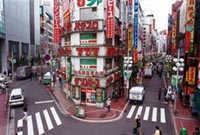Public transport in Japan’s cities is known to be quite good, and many who live in or visit the country prefer to opt out of driving. However, the rural areas are not too well connected, and if you need to travel beyond the major cities, it may become necessary to have your own vehicle.
The roads and highways in urban areas can be quite chaotic, and expats should exercise caution when driving here. Another common complaint is that many of the roads are rather narrow, posing a challenge for inexperienced drivers. Here are few tips to help you get used to driving in Japan.Road rules
There are certain rules one should be aware of when driving on Japan’s roads. Firstly, there is a zero tolerance policy towards driving under the influence of alcohol. No amount of alcohol at all is tolerated. Usually, the police can charge a person with a blood alcohol content between 0.3 to 0.5 percent. But if they feel that alcohol has impaired a person’s driving, they can take action even if the actual blood alcohol level is much lower.
There could be a substantial fine or a jail sentence.
In Japan, cars have their steering wheels on the right, while motorists drive on the left side of the road. In cities, the speed limit is set at 40 to 50 km/h. On the expressways and divided national highways, the limit is 100 km/h.
Roads in Japan usually branch out in different directions and are rarely laid out in straight lines. Navigating through these may sometimes become difficult. The best way to stay on path is to get a good map of the areas that you wish to drive in.
All passengers are required to wear seatbelts and the appropriate seats with proper restraints must be used for child passengers.
All cellular phones, handheld or otherwise, must not be used while driving.
Once you start driving, you will soon realize that not everyone follows all the rules; especially motorcyclists and other two-wheeler drivers who tend to disregard traffic laws. However it is essential that you abide by them, as there are consequences to flouting traffic regulations.
International driving permits
Japan permits foreigners to drive with an International Driving Permit (IDP) for a period of one year after taking residence. The IDP cannot be used beyond this time, even if it is still valid, unless an individual returns to their home country for a minimum of three consecutive months. IDPs are issued by the home country and Japan recognizes permits issued by all the countries based on the 1949 Geneva Convention. Certain countries like Switzerland, Germany, France, Belgium and Taiwan have separate agreements that allow people from these countries to drive in Japan with an official Japanese translation of their driver’s license for up to a year. Individuals from other countries, which do not have an agreement with Japan, must take a written and practical test to obtain a Japanese driver’s license.
Parking
It can be expensive to park in the central areas of large cities. The fees can go up to several hundreds of yen for just an hour. Smaller cities and areas that are further away from city centers have lower parking fees.
Hotels in urban areas allow their guests to park for a flat rate, which may be up to a 1000 yen for the entire night). In the smaller towns and along the Japanese countryside, you can park for free. Even the hotels in smaller cities and towns permit free parking for their guests.
Japan has the standard parking lots you see in many other countries, but it also have some unique ones, like elevator parking lots, in which the vehicles are parked in towers. At one of these lots, you need to park your car onto a lift, which will automatically store the car in the tower.
When you want to leave, the car is brought back to you by the lift. There are also some parking lots with low barriers beneath the vehicles. These barriers rise and physically block each car. Upon paying the parking fee, the barriers drop and you can get into your car and drive away. Many smaller urban lots feature these parking lots.

